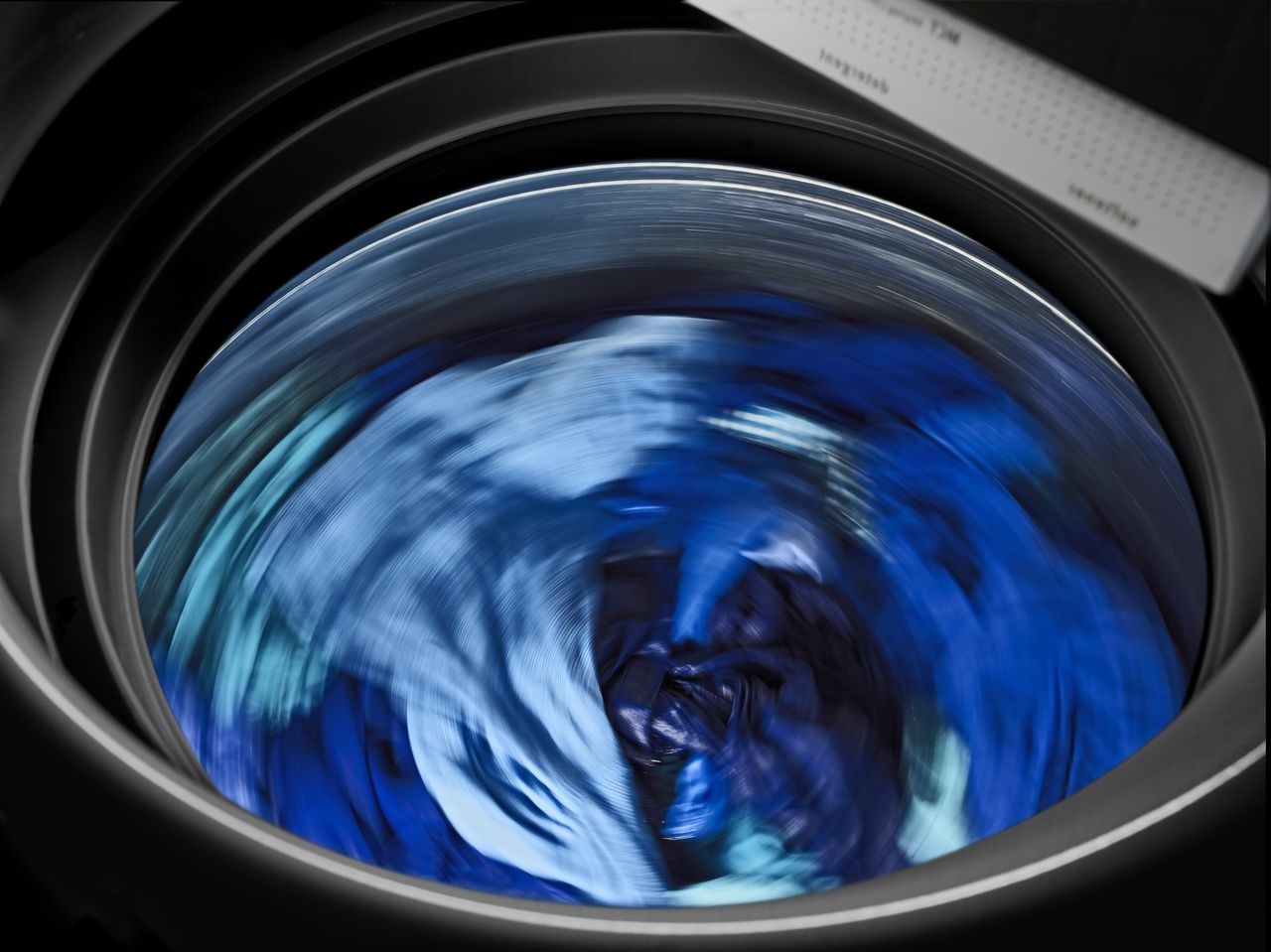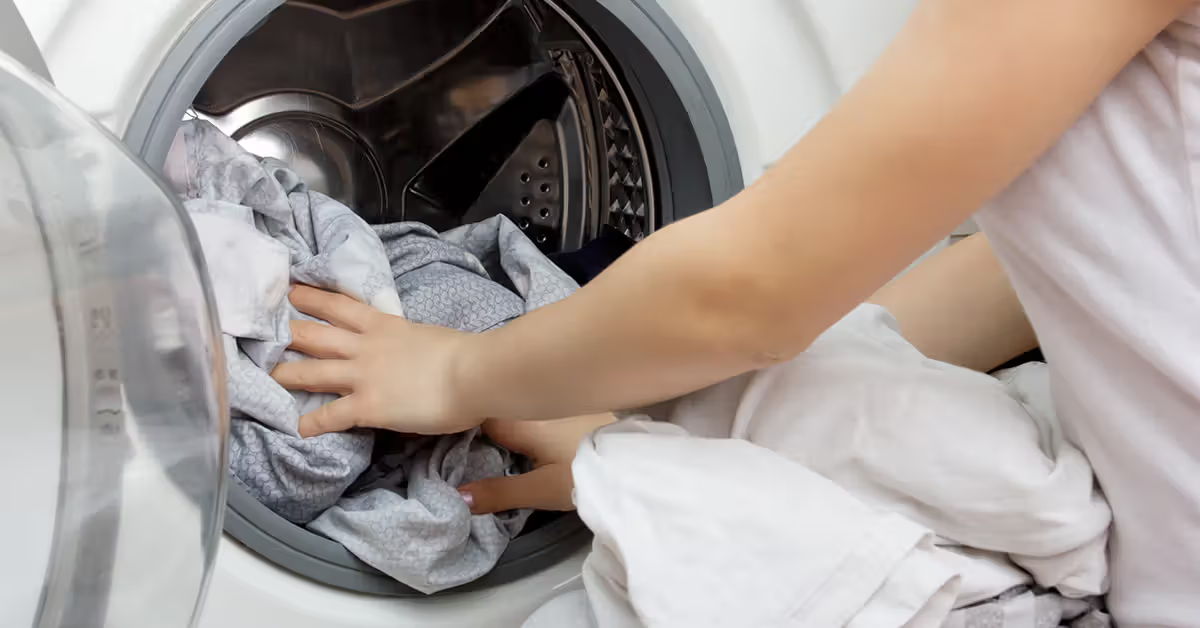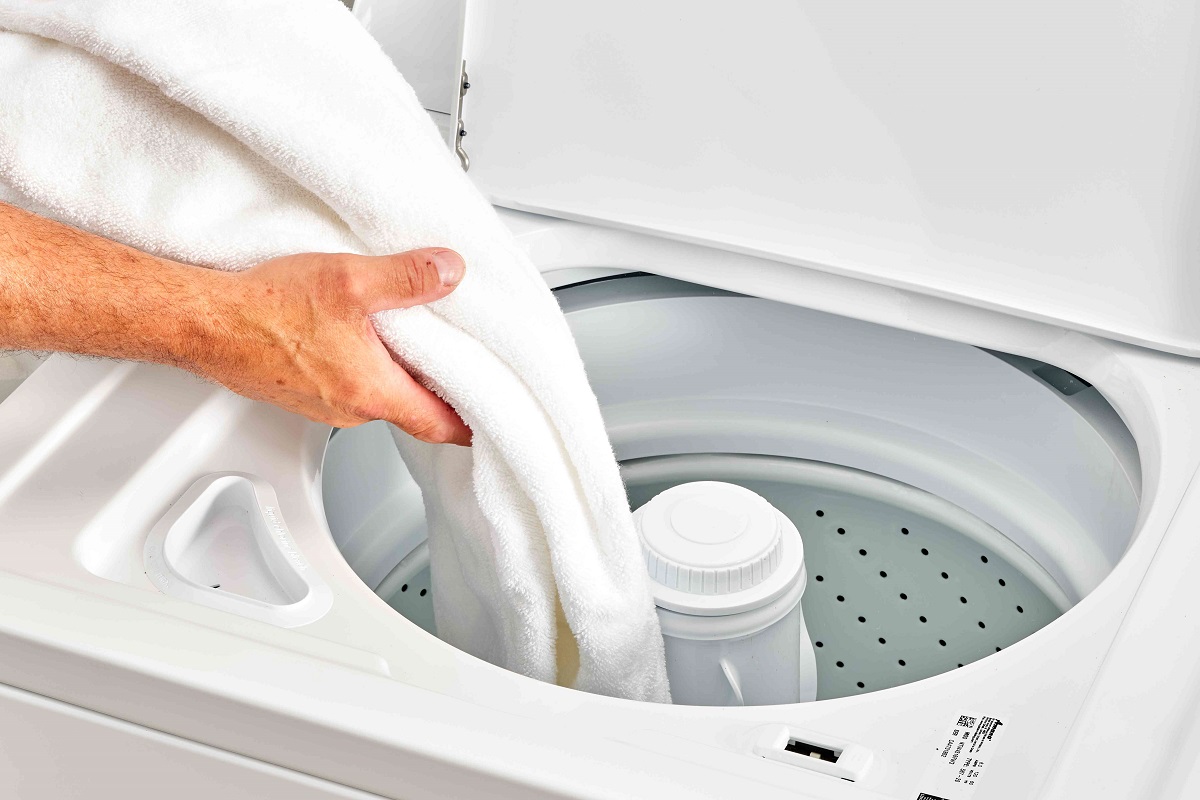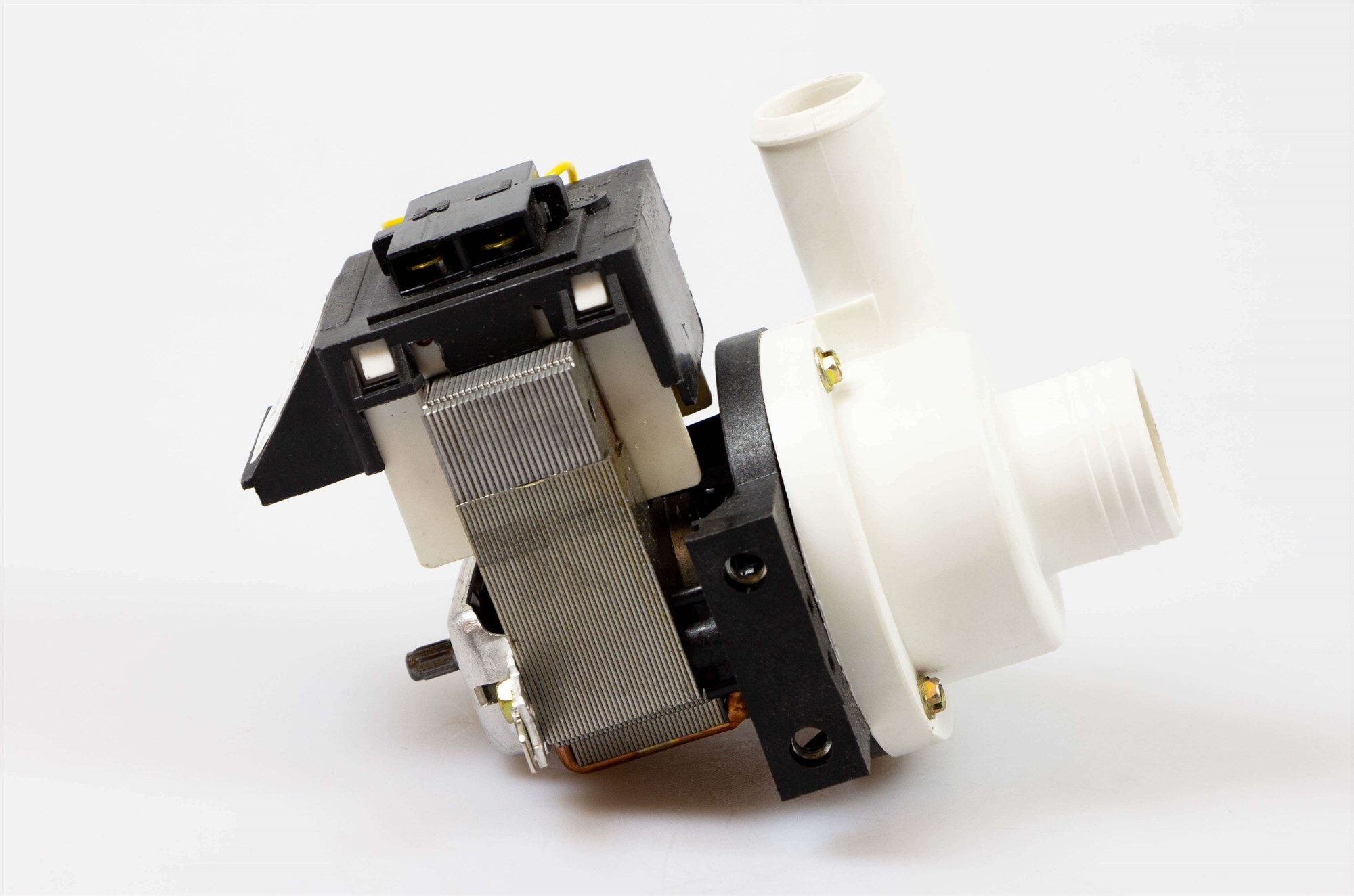Home>Home Appliances>Laundry Appliances>How Fast Does A Washing Machine Spin


Laundry Appliances
How Fast Does A Washing Machine Spin
Published: February 21, 2024
Discover the optimal speed for washing machine spin cycles and find out how it affects laundry appliances. Learn about the benefits of different spin speeds.
(Many of the links in this article redirect to a specific reviewed product. Your purchase of these products through affiliate links helps to generate commission for Storables.com, at no extra cost. Learn more)
Introduction
When it comes to doing laundry, the washing machine is an indispensable appliance that simplifies the task of cleaning clothes. One of the key features that significantly impacts the efficiency of a washing machine is its spin speed. The spin speed refers to the rate at which the drum of the washing machine rotates during the spin cycle. This crucial aspect determines how quickly excess water is extracted from the clothes, leading to shorter drying times and cleaner, fresher laundry.
Understanding the significance of spin speed is essential for anyone looking to purchase a new washing machine or optimize the performance of their existing one. The spin speed of a washing machine is measured in revolutions per minute (RPM), indicating the number of full rotations the drum makes in a minute. Typically, washing machines have spin speeds ranging from 800 to 1600 RPM, with some high-end models even reaching 2000 RPM.
In this comprehensive guide, we will delve into the various factors that influence washing machine spin speed, the benefits of higher spin speeds, the impact of spin speed on clothing, and maintenance tips to ensure optimal spin performance. By the end of this article, you will have a deeper understanding of how the spin speed of a washing machine plays a pivotal role in the overall laundry process, from washing to drying, and how it can significantly impact the quality of your laundry results.
Key Takeaways:
- High spin speed in washing machines offers benefits such as faster drying, fresher-smelling laundry, and reduced energy consumption, making it a desirable feature for efficient and cost-effective laundry.
- Understanding and maintaining washing machine spin speed is crucial for efficient water extraction, shorter drying times, and superior laundry results, ensuring a seamless and effective laundry experience.
Read more: How Does A Portable Washer Work
Factors Affecting Washing Machine Spin Speed
The spin speed of a washing machine is influenced by several key factors, each of which plays a crucial role in determining the efficiency and performance of the appliance. Understanding these factors is essential for consumers seeking to make informed decisions when purchasing a new washing machine or optimizing the spin speed of their existing one.
-
Motor Power and Efficiency: The motor of a washing machine is the driving force behind the spin cycle. The power and efficiency of the motor directly impact the maximum spin speed the machine can achieve. High-quality, energy-efficient motors are capable of delivering higher RPMs, resulting in better water extraction from the laundry.
-
Load Capacity: The amount of laundry loaded into the washing machine can affect the achievable spin speed. Machines with larger load capacities may have lower maximum spin speeds to maintain stability and prevent excessive vibrations during the spin cycle. Conversely, smaller loads allow for higher spin speeds, leading to improved water extraction.
-
Balancing Mechanisms: Modern washing machines are equipped with advanced balancing mechanisms to minimize vibrations and ensure stability during high-speed spinning. These mechanisms include shock absorbers, suspension systems, and weighted drums, all of which contribute to maintaining a consistent and safe spin speed.
-
Machine Age and Condition: Older washing machines may have limitations on their spin speed capabilities due to outdated technology or wear and tear. Regular maintenance and servicing can help optimize the spin speed of older machines, but it's important to recognize that newer models often offer higher maximum spin speeds and improved performance.
-
Program Selection: Many washing machines offer a variety of wash programs, each with different spin speed settings. The chosen program directly impacts the spin speed, with options for delicate, quick, or high-speed spins. Selecting the appropriate program for the type of laundry being washed can optimize the spin speed for the best results.
-
Technical Specifications: The design and engineering of the washing machine, including the drum size, material, and aerodynamics, can influence the achievable spin speed. Innovations in drum design, such as aerodynamic patterns and improved balance, contribute to higher spin speeds and enhanced water extraction.
Understanding these factors empowers consumers to make informed choices when selecting a washing machine that aligns with their specific laundry needs. By considering these elements, individuals can ensure that the spin speed of their washing machine is optimized for efficient water extraction and superior laundry results.
Benefits of High Spin Speed
High spin speed in washing machines offers a multitude of benefits that significantly enhance the overall laundry experience. Understanding these advantages is crucial for consumers seeking to maximize the efficiency and effectiveness of their washing machines.
-
Improved Water Extraction: High spin speeds result in more effective water extraction from the laundry during the spin cycle. This means that clothes emerge from the washing machine with significantly less moisture, reducing drying times and energy consumption. The enhanced water extraction also contributes to fresher-smelling laundry and minimizes the risk of musty odors that can develop in damp clothes.
-
Shorter Drying Times: With more water extracted during the spin cycle, the drying process becomes notably faster. This is particularly beneficial for individuals who rely on traditional air-drying methods or utilize electric or gas dryers. Reduced drying times not only save energy but also enable a quicker turnaround for freshly laundered clothes, enhancing convenience and efficiency.
-
Energy Efficiency: High spin speeds align with energy-efficient laundry practices. By extracting more water from the clothes during the spin cycle, the washing machine reduces the workload on the dryer, leading to lower energy consumption. This not only benefits the environment but also translates to cost savings for the user over time.
-
Gentler on Fabrics: Contrary to the common misconception that high spin speeds may be harsh on delicate fabrics, modern washing machines are designed to accommodate varying spin speeds for different types of laundry. The ability to adjust the spin speed based on the fabric type ensures that even delicate garments can benefit from the enhanced water extraction without being subjected to excessive force.
-
Enhanced Stain Removal: The improved water extraction facilitated by high spin speeds contributes to more effective stain removal during the wash cycle. With less water retained in the clothes, detergents and stain-fighting agents can work more efficiently, resulting in cleaner and fresher laundry.
-
Reduced Wear and Tear: By minimizing the time spent in the dryer due to the efficient water extraction achieved through high spin speeds, clothes are subjected to less heat and mechanical agitation. This can lead to reduced wear and tear on fabrics, extending the lifespan of garments and linens.
In summary, the benefits of high spin speed in washing machines encompass improved water extraction, shorter drying times, energy efficiency, gentleness on fabrics, enhanced stain removal, and reduced wear and tear on clothes. These advantages collectively contribute to a more efficient, cost-effective, and fabric-friendly laundry experience, making high spin speed a desirable feature for modern washing machines.
Impact of Spin Speed on Clothing
The spin speed of a washing machine has a profound impact on the condition and quality of clothing. Understanding how spin speed influences different types of fabrics and garments is essential for maintaining the integrity of clothing while achieving optimal cleaning and drying results.
Effect on Fabric Integrity
The spin speed directly affects the mechanical action exerted on the fabric during the spin cycle. Higher spin speeds generate greater centrifugal force, which can lead to increased stress on the fabric fibers. While this may raise concerns about potential damage to delicate or loosely woven fabrics, modern washing machines are designed to offer adjustable spin speeds to accommodate various fabric types. By selecting the appropriate spin speed for different garments, users can mitigate the risk of excessive stress on fabrics, ensuring that even delicate items are treated with care.
Read more: How Does A Washing Machine Work
Water Extraction and Drying Efficiency
The impact of spin speed on clothing extends beyond the washing phase and significantly influences the subsequent drying process. Higher spin speeds result in more effective water extraction from the laundry, reducing the residual moisture content in the clothes. This, in turn, leads to shorter drying times, whether through air-drying or machine drying methods. The efficient removal of excess water not only expedites the drying process but also minimizes the potential for mildew or musty odors to develop in damp garments, contributing to overall fabric hygiene and freshness.
Stain Removal and Soil Displacement
The centrifugal force generated by high spin speeds plays a pivotal role in dislodging dirt, grime, and stains from the fabric fibers during the wash cycle. As the drum rapidly rotates, the forceful movement of water and detergent through the laundry aids in lifting and dispersing soil particles, enhancing the overall cleaning efficacy. Additionally, the improved water extraction resulting from high spin speeds allows detergents to work more efficiently, facilitating thorough stain removal and ensuring that clothes emerge from the washing machine cleaner and fresher.
Fabric-Specific Considerations
Different fabric types, such as cotton, wool, synthetic blends, and delicate silks, may respond differently to varying spin speeds. While robust fabrics like cotton can withstand higher spin speeds for efficient water extraction, delicate or loosely woven materials may require gentler treatment to prevent damage. Modern washing machines offer customizable spin speed options tailored to specific fabric requirements, allowing users to optimize the balance between effective water extraction and fabric care.
In essence, the impact of spin speed on clothing encompasses considerations of fabric integrity, water extraction, drying efficiency, stain removal, and fabric-specific requirements. By understanding and leveraging the influence of spin speed, individuals can achieve superior cleaning and drying outcomes while safeguarding the condition of their garments and textiles.
Maintenance Tips for Optimal Spin Performance
Maintaining the optimal spin performance of a washing machine is essential for ensuring efficient water extraction, superior laundry results, and the longevity of the appliance. By implementing regular maintenance practices, users can maximize the spin speed capabilities of their washing machines while minimizing the risk of performance issues and malfunctions.
Read more: How Does A Washing Machine Drain
1. Leveling and Stability
Ensuring that the washing machine is properly leveled is crucial for maintaining optimal spin performance. Use a spirit level to check the machine's balance, adjusting the leveling feet as needed to eliminate any wobbling or instability during the spin cycle. This promotes consistent and safe high-speed spinning, preventing excessive vibrations that can impact the machine's efficiency.
2. Drum Maintenance
Regularly inspecting the washing machine drum for any foreign objects, such as coins, buttons, or small garments, is essential for preventing imbalances and potential damage during the spin cycle. Additionally, cleaning the drum and its surrounding seals helps prevent the accumulation of debris that could affect the machine's balance and spin speed.
3. Maintenance of Balancing Mechanisms
Modern washing machines are equipped with sophisticated balancing mechanisms, including shock absorbers and suspension systems, designed to minimize vibrations during high-speed spinning. Periodically inspect and maintain these mechanisms to ensure they are functioning optimally, thereby promoting stable and efficient spin performance.
4. Cleaning and Descaling
Regular cleaning of the washing machine's detergent drawer, door seal, and internal components is vital for preventing the buildup of detergent residue, limescale, and debris that can impede the machine's performance. Utilize manufacturer-recommended cleaning agents and descalers to maintain the cleanliness and functionality of the appliance.
Read more: How Does A Power Washer Work
5. Maintenance of Motor and Drive Components
The motor and drive components of the washing machine play a pivotal role in achieving high spin speeds. Periodic inspection and maintenance of these components, including the drive belt and motor brushes, can help ensure optimal performance and prevent issues that may hinder the machine's spin capabilities.
6. Program and Load Optimization
Selecting the appropriate wash programs and load sizes based on the laundry being washed is essential for optimizing spin performance. Overloading the machine or using an unsuitable program can lead to imbalances and reduced spin speeds. By following manufacturer guidelines and recommendations, users can maximize the efficiency of the spin cycle.
By adhering to these maintenance tips, users can uphold the optimal spin performance of their washing machines, promoting efficient water extraction, shorter drying times, and superior laundry outcomes. Regular maintenance not only enhances the appliance's functionality but also contributes to cost savings and prolonged durability, ensuring a seamless and effective laundry experience.
Frequently Asked Questions about How Fast Does A Washing Machine Spin
Was this page helpful?
At Storables.com, we guarantee accurate and reliable information. Our content, validated by Expert Board Contributors, is crafted following stringent Editorial Policies. We're committed to providing you with well-researched, expert-backed insights for all your informational needs.













0 thoughts on “How Fast Does A Washing Machine Spin”